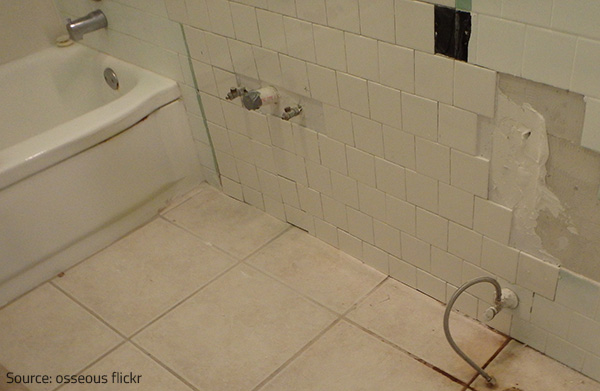Just How to Prevent Water Damage in Your Bathroom
Just How to Prevent Water Damage in Your Bathroom
Blog Article
The article below relating to How to Fix a Water Damage Bathroom is definitely insightful. Don't skip it.

The washroom is incredibly at risk for wet build-up and also prospective water damages due to the regular use of water in it. This post supplies easy examination strategies to assist discovering water damage risks.
The constant use of water in the shower room makes it extremely susceptible for wet accumulation as well as possible water damage. By evaluating it routinely, you can minimize water relevant damages.
The complying with collection of inspections is simple to do and also ought to be done when in every 3 months in order to maintain your shower room healthy and to avoid prospective water problems caused by the bathtub, the shower, pipe joints as well as plumbing, sinks, closets, and the toilet
Do not overlook doing these examinations and also be detailed while executing them. Keep in mind that these easy assessments can save you a lot of money by offering early indicators for water damage
Sinks and Cabinets
Sinks and closets are revealed to dampness and also moisture day-to-day and also are typically ignored. Examine frequently under the sink as well as on the countertop above it. Repair any kind of drip in the catch as it may suggest drain troubles. Check out the sink, slow-moving draining pipelines might suggest a blocked drain. Change sink seals if they are split or loosened.
Tub and also Shower
The shower as well as tub require special focus as well as maintenance. Check the tiles and also change if broken. Make sure that there is no missing cement in between the floor tiles. Check and change split caulking at joints where the walls fulfill the floor or the bathtub. Obstructed drains pipes as well as pipes troubles will stop the tub from drying and also may indicate significant issues beneath the bath tub. Talk to a professional quickly to avoid structural damages. Pay attention to stainings or soft areas around the bath tub walls as they may suggest an internal leakage.
Plumbing
Signs for water damage are tough to find because the majority of pipes are set up inside the walls.
Pay unique attention to floor covering and wall surfaces dampness as well as stains as they might suggest an invisible plumbing trouble. Inspect moisture degrees in adjoining areas also.
The Toilet
The commode is a susceptible water joint. Inspect the water lines and also look for leaks around the bathroom seat, in the hose pipe, and also under the water storage tank. If you find any type of indicators of wetness on the flooring around the bathroom, check for leaks in the toilet edge and storage tank seals.
Realize that hanging bathroom dish deodorants boosts the opportunities for clogs.
Water Damage Signs In The Bathroom To Avoid Cleanup
Musty smell
This is one of the easiest signs to catch because musty smells are so odorous. The damp, earthy, moldy smell should be a big red flag. The smell will develop when moisture gets trapped in surfaces, and begins to facilitate mold growth. Leaking pipes under cabinets, inside walls, and behind shower fixtures will cause moisture to stay trapped and not dry, which will lead to mold growth and spread. As soon as you notice any musty smells in your bathroom, have it checked for hidden water damage and cleanup signs.
Visible mold
If the smell isn’t there to give it away, sometimes you will actually see mold growth. Finding mold in your bathroom is a serious problem, because mold is very harmful to your health. By the time mold growth is visible, it also means that water damage has already occurred and been present for some time. The only way the mold problem can be resolved is to find the source of the moisture and get it stopped. To safely and adequately remove mold, you need to have professionals handle the remediation. Do not waste any time in getting mold problems addressed, fixed, and sanitized so that you can protect you and your family from the many respiratory symptoms caused by mold exposure.
Damaged floors
Bathroom floors should be able to withstand some exposure to water while still remaining in good condition. However, when excess exposure or water leaks occur, they will begin to damage even the most water-resistant flooring. If you notice any cracking, bubbling, staining, or warping on your bathroom floors, there is probably a water leak somewhere causing the distortion. If you notice areas of the floor have become softer, or even have a spongy feeling, there is probably damage to the subfloor. Subflooring is typically made up of plywood. When plywood is exposed to water or moisture, it will absorb it. Once it has become saturated, the weight of the excess water will cause the wood to swell and soften. Check the floors in your bathroom frequently to catch any of these sings before they lead to damaged subflooring.
Changes on walls
When water leaks behind walls, it will cause changes in the drywall. Peeling plaster, blistering paint, and soggy wallpaper are all good indicators that excess water is building up behind the wall. Water leaking behind drywall will cause it to swell and be soft to the tough. If you start to notice gaps along the trim of your walls, or where tile meets the wall, it could also be a strong indicator that there is a leak behind the wall. Any changes, distortion, or damage on the walls should be evaluated as soon as you notice it to prevent further water damage and cleanup.

I ran across that post on How to Fix a Water Damage Bathroom when browsing the web. Enjoyed our piece of writing? Please share it. Help someone else discover it. Many thanks for taking the time to read it.
At This Website Report this page